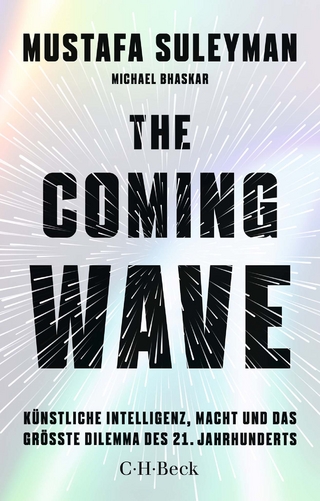
Generic Object Recognition Using Form And Function
Seiten
1996
World Scientific Publishing Co Pte Ltd (Verlag)
9789810215088 (ISBN)
World Scientific Publishing Co Pte Ltd (Verlag)
9789810215088 (ISBN)
- Titel z.Zt. nicht lieferbar
- Versandkostenfrei
- Auch auf Rechnung
- Artikel merken
A detailed record of the "GRUFF" research project, which aims to develop techniques for robotic vision systems to recognize objects by reasoning about their intended function rather than matching to a pre-defined database of 2-D object appearances or 3-D object shapes.
This monograph provides a detailed record of the “GRUFF” research project. The goal of the GRUFF project is to develop techniques for robotic vision systems to recognize objects by reasoning about their intended function rather than matching to a pre-defined database of 2-D object appearances or 3-D object shapes. The contributions of this work are: a demonstration of the feasibility of the “form and function” approach to reasoning about 3-D shapes; a demonstration of the concept of using a small number of knowledge primitives as component building blocks in creating a function-based definition of an object category; and an indexing mechanism to make processing for recognition more efficient without any substantial decrease in correctness of classification. Results are given for the analysis of over 500 3-D shape descriptions created with a solid modeling tool and over 200 shape descriptions extracted from real laser range finder images.
This monograph provides a detailed record of the “GRUFF” research project. The goal of the GRUFF project is to develop techniques for robotic vision systems to recognize objects by reasoning about their intended function rather than matching to a pre-defined database of 2-D object appearances or 3-D object shapes. The contributions of this work are: a demonstration of the feasibility of the “form and function” approach to reasoning about 3-D shapes; a demonstration of the concept of using a small number of knowledge primitives as component building blocks in creating a function-based definition of an object category; and an indexing mechanism to make processing for recognition more efficient without any substantial decrease in correctness of classification. Results are given for the analysis of over 500 3-D shape descriptions created with a solid modeling tool and over 200 shape descriptions extracted from real laser range finder images.
The Knowledge Primitives; From Knowledge Primitives to Functional Properties; From Functional Properties to Category Definitions; Flow of Control in Reasoning About Object Shape; Recognition Results from Completely Known 3-D Shapes; Recognition Results from Partial 3-D Shape Information; Discussion.
| Erscheint lt. Verlag | 1.2.1996 |
|---|---|
| Reihe/Serie | Series In Machine Perception And Artificial Intelligence ; 10 |
| Verlagsort | Singapore |
| Sprache | englisch |
| Themenwelt | Informatik ► Theorie / Studium ► Künstliche Intelligenz / Robotik |
| ISBN-13 | 9789810215088 / 9789810215088 |
| Zustand | Neuware |
| Informationen gemäß Produktsicherheitsverordnung (GPSR) | |
| Haben Sie eine Frage zum Produkt? |
Mehr entdecken
aus dem Bereich
aus dem Bereich
Eine praxisorientierte Einführung
Buch | Softcover (2025)
Springer Vieweg (Verlag)
CHF 53,15
Künstliche Intelligenz, Macht und das größte Dilemma des 21. …
Buch | Softcover (2025)
C.H.Beck (Verlag)
CHF 25,20
Buch | Softcover (2025)
Reclam, Philipp (Verlag)
CHF 11,20


